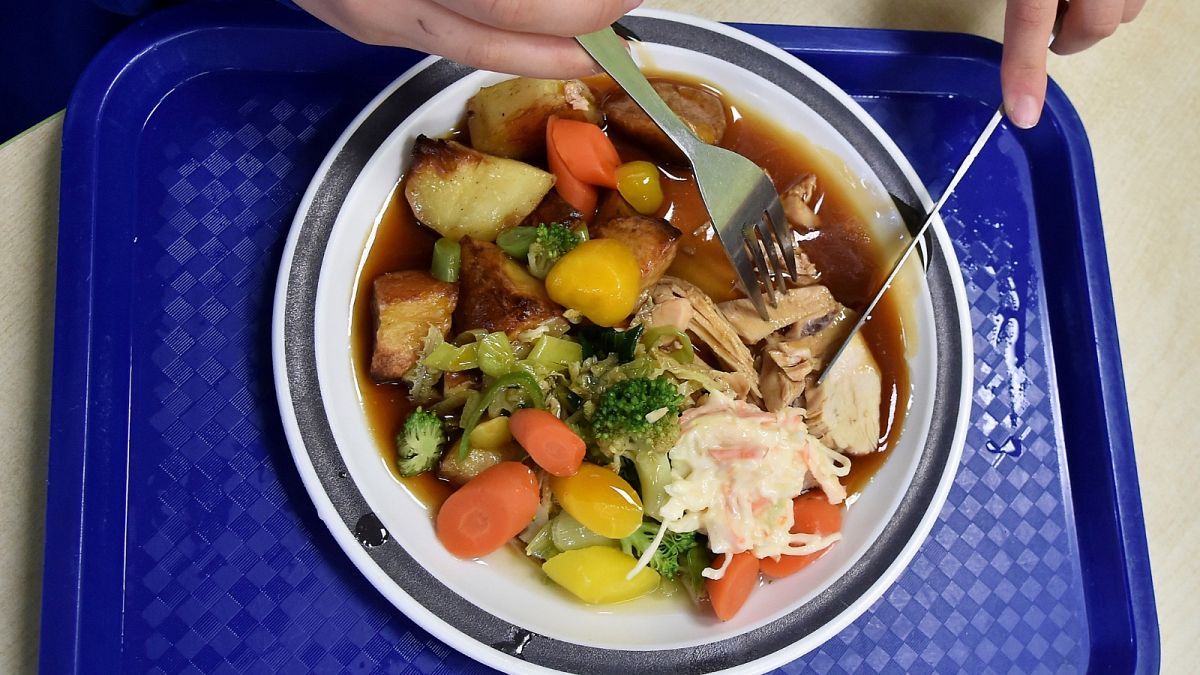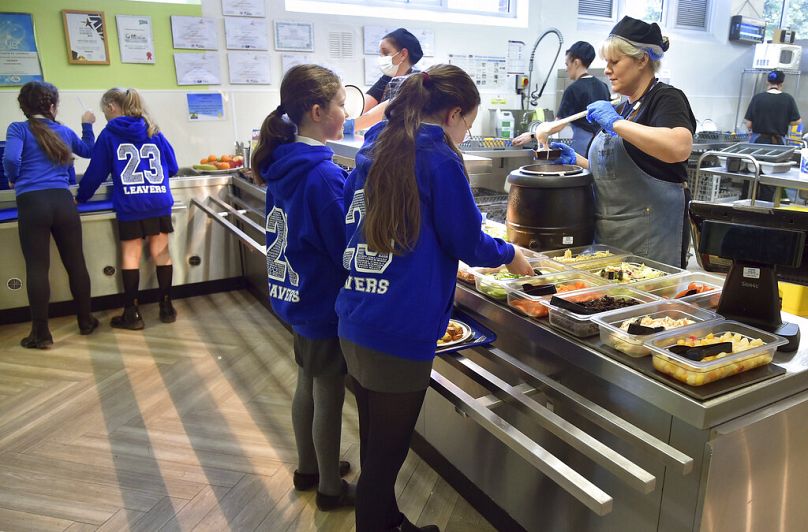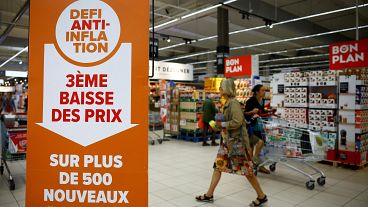A quarter of children are at risk of poverty or social exclusion in the EU. Some families have difficulties in feeding their kids. Five EU countries provide universal free school meals for at least some ages. Others mostly supply meals for the students whose families get income-related benefits.
Many children in Europe go back to school this week but some of them will be returning to their classrooms hungry. In 2022, a quarter of children in EU member states were at risk of poverty or social exclusion.
Free or subsidised school meals can help to make sure that children are fed and give them adequate nutrition. But the provision of free school meals in the EU varies substantially
Real wages fell in most European countries as inflation reached its highest levels in 2022. Real minimum wages also decreased in most EU member states. Low-income households are particularly struggling to cope with the resulting cost-of-living crisis.
“My brothers and I relied on free school meals,” Sadiq Khan, Mayor of London, tweeted with a photo in which he appeared with his brothers.
Almost 300,000 primary students in London will be getting free school meals throughout the 2023/24 academic year. In 2022/23 academic year, 2.16 million pupils were entitled to free school meals in England, representing 23.8% of all students, while 1.6 million infant pupils were recorded as receiving free school meals in January 2023.
In the UK, children are eligible for free school meals if they live in a household which gets income-related benefits and has an annual income of less than a particular amount. This was £7,400 (€8,650) after tax, not including welfare payments in England.
Free school meals in the EU
According to a recently published academic article entitled “Free school meals for all poor children in Europe: An important and affordable target?” by Anne-Catherine Guio of the Luxembourg Institute of Socio-Economic Research, the political priority given to providing free school meals to children in need varies significantly across the EU.
Some countries clearly prioritise such provision to all or most children, while others aim to reach children in vulnerable situations or some schools. Some pilot programmes also exist in some countries where school meals are not provided on a large scale.
By ‘full meals’, we mean school lunches - which doesn't include breakfast clubs, school fruit or milk programmes, or sandwiches.
As of 2021, provision practices can be grouped into four categories according to research funded by the European Commission.
1. Universal free meals (at least at some ages):
Finland, Sweden and Estonia are the three EU member states providing universal free meals for all age groups.
Latvia and Lithuania provide free meals to some grade levels. One full meal per day is given for first to fourth grade students, and in some municipalities, for older students. In 2020, Lithuania began to provide free meals for pre-primary and first-grade pupils.
2. Targeted free meals across the whole country
There are 10 EU member states which provide free meals to low-income children and other groups of children who may face disadvantages, such as children in public care and refugee children. Eligibility criteria in this group differs.
Cyprus: It is free in all-day primary schools for pupils who live in households that receive a gross minimum income, children of asylum seekers, unaccompanied migrant children, children under the guardianship of the state and children in households in which a member has a severe disability or health problem.
Czechia: It is free for low-income children aged 3-15 (receiving minimum income) if schools participate in the funding scheme.
Germany: Lunch is only provided in all-day schools, mostly subsidised. It can be reimbursed as part of the education and participation benefits of low-income households with children with basic income support for jobseekers, social assistance, asylum seekers benefits or supplementary child benefits or housing benefits.
Hungary: It is free in primary school (50% reduction in secondary school) for children receiving regular child protection benefits or in foster care.
Luxembourg: The price depends on the household income. It is free for children living in a household receiving the minimum income or to children identified by local social offices as “experiencing precariousness or social exclusion.”
Malta: It is only free in state schools for children in low-income households; those with a student/parent/sibling suffering from a terminal illness or chronic mental health illness; students experiencing neglect due to family difficulties, domestic violence or substance abuse; and those with refugee status or asylum seeker/subsidiary temporary protection.
Portugal: The price depends on the household income. It is free for children living in a low-income household or with disabilities.
Slovakia: It is free for children living in a low-income household in primary schools and all children in the last year of preschool education.
Slovenia: It is free for children living in a low-income household.
Spain: Provision practices vary between autonomous communities and two autonomous cities. It may be free for children living in a low-income household, children in foster care, children in a household suffering from gender-based violence, victims of terrorism, unaccompanied minors and those with disabilities.
United Kingdom: It depends on the household income.
3. Subsidised meals and/or free meals not covering the whole country
Some countries prefer to mostly target schools rather than individuals. Schools are generally selected in disadvantaged regions. There are also 10 EU member states that provide either subsidised meals and/or free meals but do not cover the whole country. They are Austria, Belgium, Bulgaria, Greece, France, Croatia, Ireland, Italy, Poland and Romania.
In France, the meals are free in about 50 municipalities out of 35,000. The price depends on the household income in most large towns. As part of the 2017 poverty action plan, local authorities offering a progressive price scale with price segments equal to or below €1 can benefit from a state contribution.
In Belgium, a pilot project is carried out among the French-speaking community targeted at the most disadvantaged schools at only the pre-primary level.
4. No provision
Denmark and the Netherlands do not provide free school meals.
Free school meals began in 1948 in Finland
Feeding students has a long history. Schools, charities and governments in Europe have been providing children with school meals for over a century, in various forms and for various reasons. In Finland, the provision of universal free school meals for all children attending school began in 1948.
Do children need free school meals?
There are several findings showing that some EU inhabitants need support to get proper food. In 2022, 8.3% of the EU population were unable to afford a meal containing meat, fish or a vegetarian equivalent every second day. This rate was 19.7% for people who were at risk of poverty.
More importantly, 24.7% of children in the EU were at risk of poverty or social exclusion in 2022. This ranged from 10.3% in Slovenia to 41.5% in Romania.
The UK (29.2), Italy (28.5) and France (27.4) are among the countries where the percentage of children at risk of poverty or social exclusion is higher than the EU average. This rate was 24% in Germany.
This risk was less than 14% in the Netherlands and Denmark - two countries that do not provide free school meals.
More food is consumed on Mondays
Another finding also shows the significance of free school meals. In Finland, the consumption of food at schools on Mondays can be 20% more than on other weekdays. According to Anne-Catherine Guio’s report, this may indicate that during the weekend, children in low-income families do not receive enough food.




